-
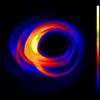 +14 +1
+14 +1Incredible Technology: How to See a Black Hole
An ambitious project aims to image the close environs of a black hole for the first time.
-
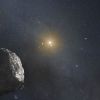 +23 +1
+23 +1Our early solar system may have been home to a fifth giant planet
Jumping Neptune solves Kuiper belt mystery
-
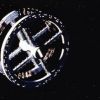 +18 +1
+18 +1The Space Review: 1997, 2001, 1999: a science fiction calendar from the Apollo era
The 46th anniversary of the first human lunar landing passed largely without notice in the national media last week. It’s hard to understand how such an epochal event, the fulfillment of a dream born in the first stirrings of human consciousness and deemed impossible for most of the history of our species, could fade so quickly into the historical background of American achievement.
-
 +11 +1
+11 +1Tracking A Mysterious Group of Asteroid Outcasts
Astronomers may have found the source of a particularly hard-to-spot group of near-Earth asteroids
-
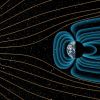 +17 +1
+17 +1Earth's magnetic shield is much older than previously thought
Since 2010, the best estimate of the age of Earth's magnetic field has been 3.45 billion years. But now a researcher responsible for that finding has new data showing the magnetic field is far older.
-
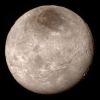 +11 +1
+11 +1Mystery Solved? Why Pluto's Big Moon Charon Has a Red Pole
The dark red pole on Pluto's largest moon Charon may be some of the dwarf planet's own siphoned-off atmosphere.
-
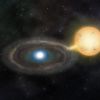 +16 +1
+16 +1Gaia satellite and amateur astronomers spot one in a billion star.
A team of researchers has discovered the first known system, Gaia 14aae, where one star completely eclipses the other — a type of a two-star system known as a cataclysmic variable.
-
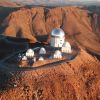 +16 +1
+16 +1Astronomers spy brightest-ever supernova
Exploding star is twice as luminous as any other reported.
-
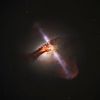 +16 +1
+16 +1Enormous Black Hole Is Too Big for Its Galaxy
A newfound giant black hole nearly as massive as 7 billion suns is dozens of times larger than astronomers expected given its host galaxy's size, researchers say. The finding may call most current models of galaxy formation into question.
-
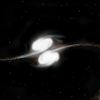 +10 +1
+10 +1Galactic crashes fuel quasars.
When galaxies collide, bright things happen in the universe. Using the Hubble Space Telescope's infrared vision, astronomers have unveiled some of the previously hidden origins of quasars, Read more at: http://phys.org/news/2015-06-galactic-fuel-quasars.html#jCp
-
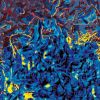 +24 +2
+24 +2A Universe Made of Tiny, Random Chunks
One of science’s most crucial yet underappreciated achievements is the description of the physical universe using mathematics
-
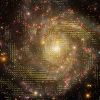 +15 +2
+15 +2Magnetic field discovery gives clues to galaxy-formation processes | Astronomy.com
Astronomers making a detailed multi-telescope study of a nearby galaxy have discovered a magnetic field coiled around the galaxy’s main spiral arm.
-
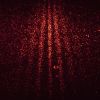 +14 +2
+14 +2How gravity kills Schrödinger's cat
Theorists argue that warped space-time prevents quantum superpositions of large-scale objects.
-
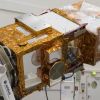 +13 +2
+13 +2Sentinel-2 operations
Following on from the Sentinel-1 radar satellite, Sentinel-2 is the next ESA mission dedicated to Europe’s ambitious Copernicus programme. It carries an innovative high-resolution optical imager payload providing a new perspective of our planet's land and vegetation. The instrument's com…
-
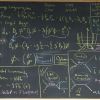 +9 +2
+9 +2The Mysterious Physics of 7 Everyday Things
Though physicists have figured out everything from the radius of black holes to the age of the universe, the physics of many everyday things remains mysterious.
-
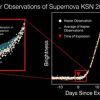 +13 +2
+13 +2NASA Spacecraft Discover Rare, Early Moments of Baby Supernovae
NASA’s Kepler and Swift have caught unprecedented glimpses of newborn supernovae, stellar explosions that can help unravel the secrets of dark energy.
-
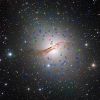 +16 +2
+16 +2The Dark Side of Star Clusters
Observations with ESO’s Very Large Telescope in Chile have discovered a new class of “dark” globular star clusters around the giant galaxy Centaurus A. These mysterious objects look similar to normal clusters, but contain much more mass and may either harbour unexpected amounts of dark matter, or contain massive black holes — neither of which was expected nor is understood.
-
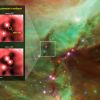 +6 +2
+6 +2Newborn Star Erupts After Binging on Gas and Dust
A young star in Orion's dusty nebula roughly 1,400 light-years away has erupted after munching down gas and dust.
-
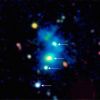 +21 +2
+21 +2Quasar quartet puzzles scientists
Astronomers must rethink models about the development of large-scale cosmic structures
-
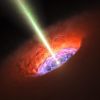 +14 +2
+14 +2Astronomers reveal supermassive black hole's intense magnetic field
Astronomers from Chalmers University of Technology have used the giant telescope Alma to reveal an extremely powerful magnetic field very close to a supermassive black hole in a distant galaxy. The results appear in the 17 April 2015 issue of the journal Science.
Submit a link
Start a discussion




















